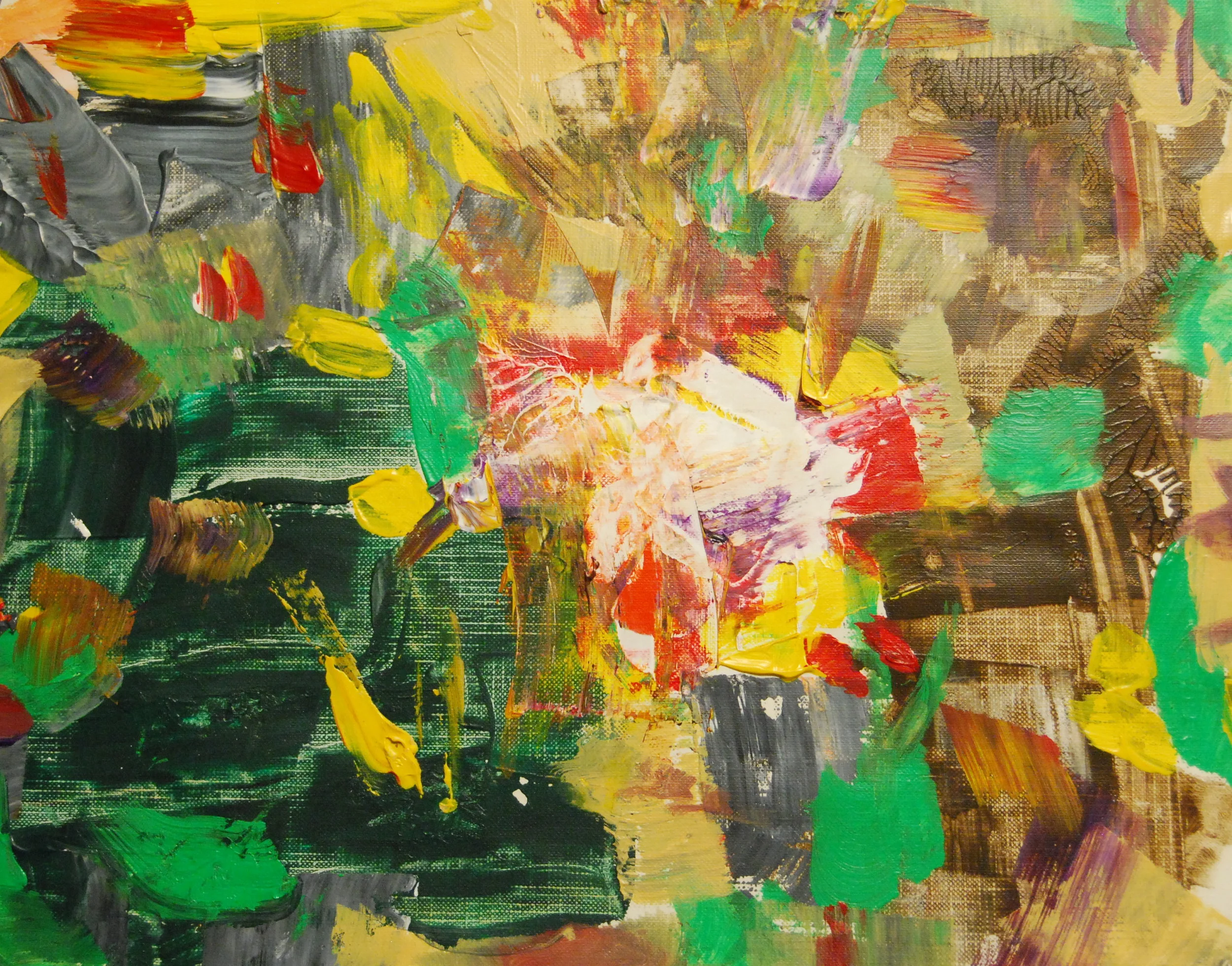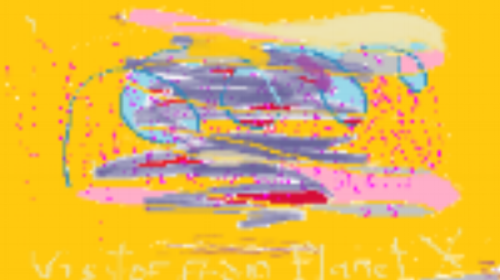and the Visitor from Planet X, and...
GARDEN OF LOVE
It was one of those fortuitous strokes we make every now and then which, once accomplished, seem so natural as to make us wonder they don't happen more frequently, while it's probably true that those seemingly wasted, frustrating hours that preceded the lucky inspiration were its necessary precursors.
I had been fooling around with a program that allows children to "paint" with their fingers on the computer screen and, having made something that simultaneously intrigued and annoyed me, I was engaged in staring at the image, searching for the sources of my fascination and my discontent.
It's an abstract picture - blobs of yellow, streaks of green and red, a background of hazy blue. On a whim I turned the program back on and, in thin magenta "pencil,” scrawled across the image Garden of Love.
All at once I loved it. On the one hand the description, Garden of Love, endows an ambiguous image with concrete meaning that now exists in harmonious tension with its purely aesthetic qualities. On the other hand those magenta squiggles become part of the painting. In color and in line they contrast effectively with the amorphous pastels upon which they seem to lie. The neat, traditional division between work and title, word and deed, is dissolved, and an interpretation is thrust upon us in a manner that alters the act of viewing, the process of understanding.
But the really disconcerting and, I think, serendipitous, touch is the rendering of the title, Garden of Love: it is not so much inscribed as scribbled, graffiti - style, across the original image, in such a way that the lines of demarcation between high art and pop culture, silliness and sublimity, are blurred, and I readily admit that this blurring was not intended: it was fortuitous, as I said, and probably thanks to that it's effective.
In fact, blurring the lines of demarcation, or confusing conventional categories, or discovering, fostering, celebrating ambiguity, is what I mostly enjoy doing these days, an exercise by which, I understand, I come belatedly to an aesthetic stance common in the latter part of the previous century. (I'm not copying history, I'm making it again, all by myself, but I'm a little slow.)
And so I find other questions this little image serves to raise.
Is it a painting or a photograph? One finds traces of a human touch alongside
evidence of mechanical processes.
Is it original or derivative? Now that it's made I see a resemblance to Kandinsky's famous painting of the same name as well as to Jardin d'Amour by Hans Hofmann.
And what's a Garden of Love anyway? An earthly paradise of sensuous delights? A primordial realm of spirit from which our lost souls have wandered? Neither? Both?
Is this what art can do - resolve the contradictions and paradoxes of language
through the transcendental power of beauty? If so perhaps enough has been said, and what's needed is more art. That's what follows: a series of child-like photo-paintings with integrated titles. This is not the direction I imagined for myself a little while ago, which might indicate that growing older (which is inevitable) provides an opportunity for growing wiser (as in less certain, more open) so that, while art may not change the world, it might encourage us toward that state of humility and wonder that life deserves and that death
will demand.









